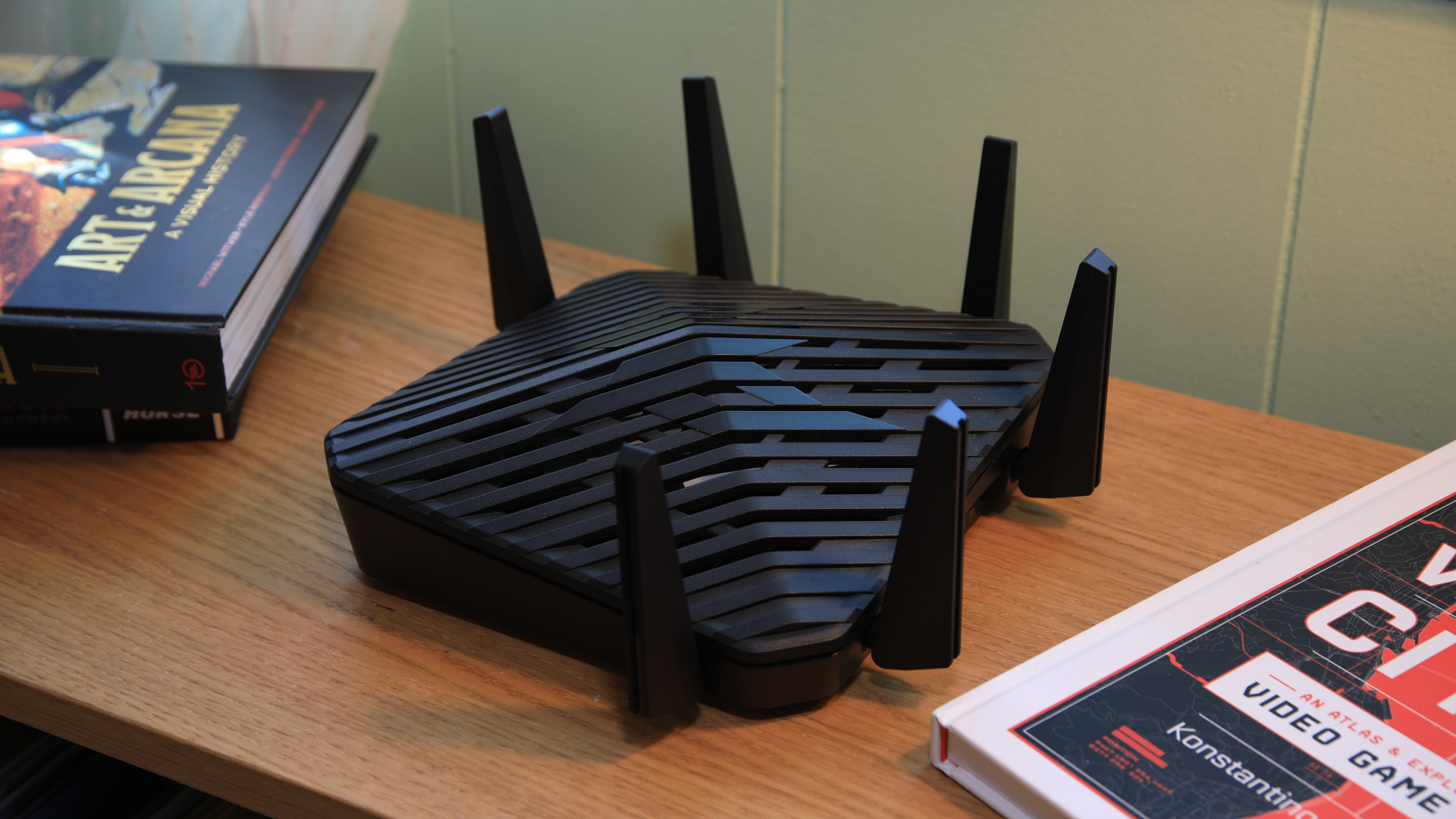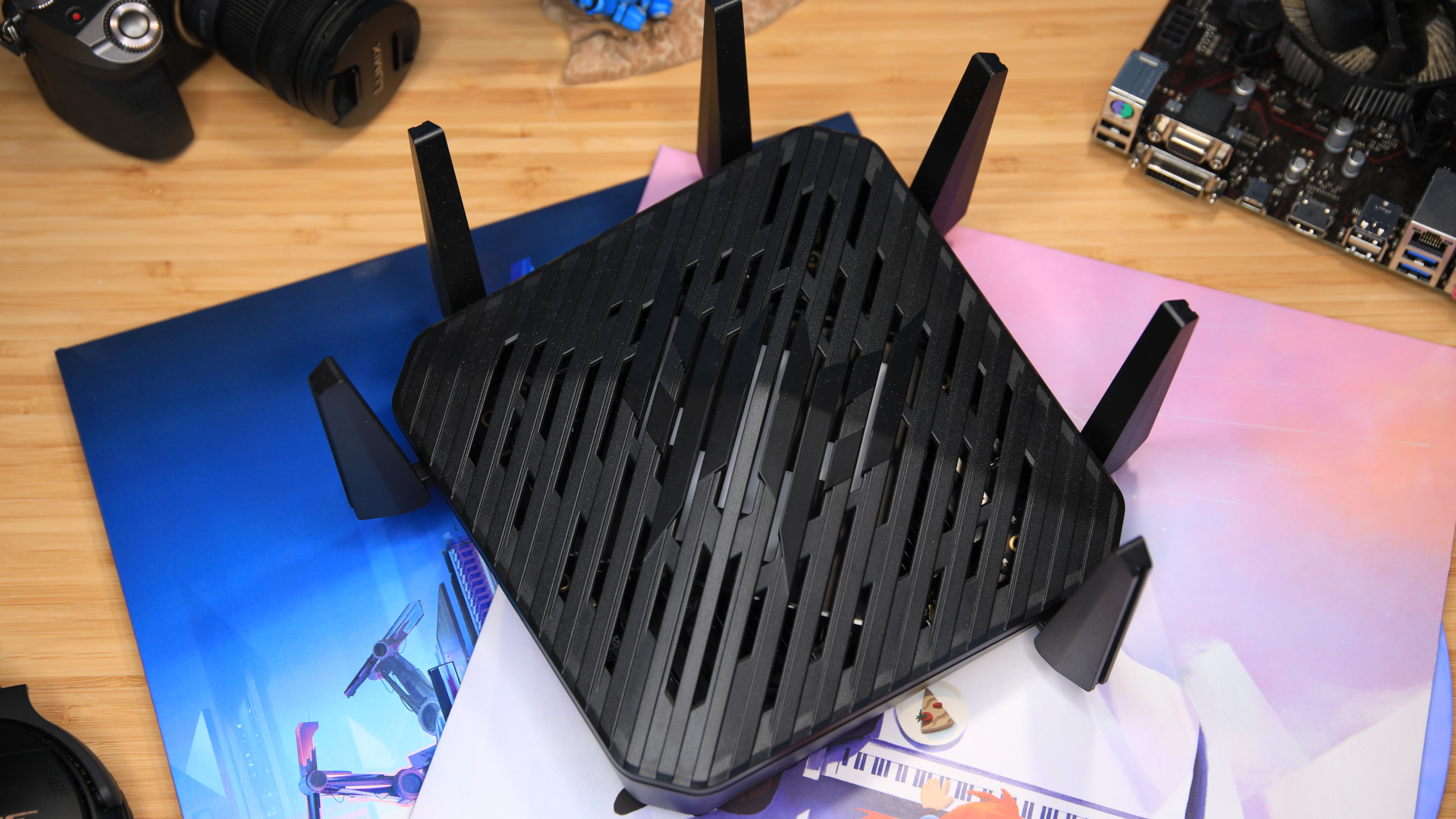Tom's Hardware Verdict
You’ll like the Predator Connect W6’s simplicity, but it's not the best performance value.
Pros
- +
Quick, easy setup that doesn’t require an app
- +
Attractive web browser interface and smartphone app
- +
Good performance at short distances
Cons
- -
Overall Wi-Fi performance is solid, but mediocre
- -
Nvidia GeForce Now quality-of-service feature doesn’t help
- -
Gamer-centric design with bright LED is gaudy
Why you can trust Tom's Hardware
Acer has dabbled in the gaming router arena with its line-up of Predator Connect routers. The latest model is the Predator Connect W6 and, frankly, it’s a rather standard Wi-Fi 6E router in both design and features. With support for Wi-Fi 6E, a 2.5 Gbps Ethernet port for connection to a modem, and a quality-of-service feature that includes a setting optimized for GeForce Now, it seems to cover what gamers would expect from a mid-range router. Unfortunately, unreliable performance at long distances holds it back.
Design of the Acer Predator Connect W6


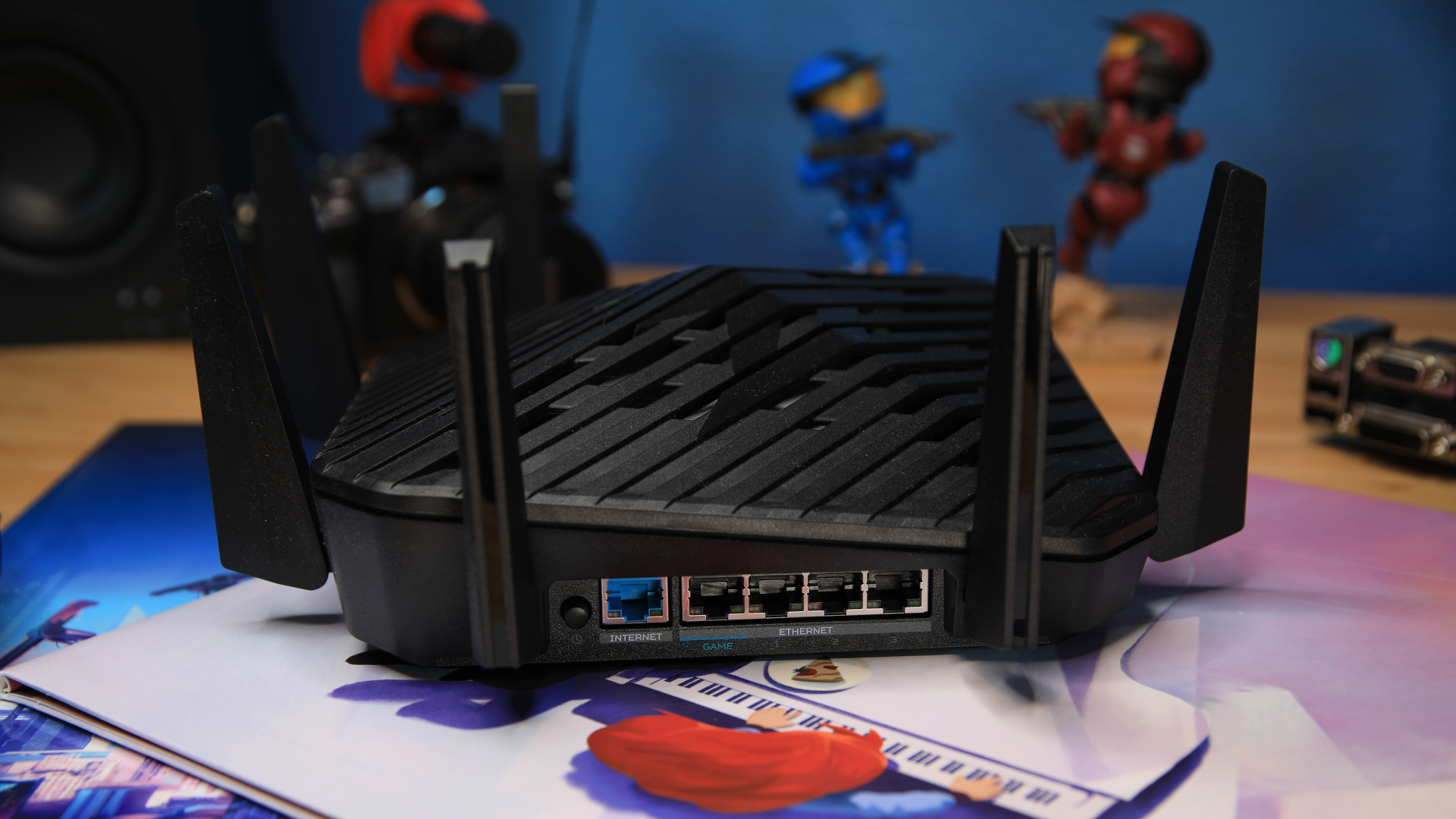
The Acer Predator Connect W6 leans into the aggressive look common to many gaming routers. That means a matte black finish, large vents, and hard edges, all served with a big, bright, pulsing RGB-LED. It’s a router, but it also works as a night light (fortunately, the LED can be turned off).
Six antennas, each capable of rotating 180 degrees and pivoting 90 degrees, dot the outside of the router. They can be adjusted to a healthy variety of configurations—tight against the router, placed at an angle, or sticking straight out. That’s good, since it offers wiggle room to adjust the antennas based on where you want to place it.
The router’s versatility is reduced, however, by the location of each antenna. Each side of the router’s square footprint has an antenna attached, so the router is clearly meant to be used in a horizontal orientation. The exception to this is the screw hook, which supports placing the router on a wall in a vertical orientation.
All the ports, as well as the power adapter, are found on the rear side of the router. They’re flat against the back of the router and not significantly recessed. Connecting an Ethernet cable couldn’t be more simple.
Specs
| Processor | Quad-Core 2.0 GHz |
| Memory | 1GB DDR4 and 4GB eMMC Storage |
| Operating Frequency | 2.4 GHz / 5 GHz / 6 GHz |
| Data Rates | 2.4 GHz: 600 Mbps / 5 GHz: 4.8 Gbps / 6 GHz: 2.4 Gbps |
| Ports | 1x 2.5 Gbps Ethernet, 4x Gigabit Ethernet, 1x USB-A 3.0, power-in |
| Encryption | WPA/WPA2/WPA3-Personal, AES Encryption, WPS supported |
| Wi-Fi Technology | Wi-Fi 6E, MU-MIMO, OFDMA |
| Beamforming | Supported |
| Dimensions | 10.43 x 10.24 x 4.37 inches |
| Weight | 1.92 pounds |
| MSRP / Price at Time of Review | $299.99 / $250 |
Setting Up the Acer Predator Connect W6
I’m pleased to report the Acer Predator Connect W6 functioned straight out of the box. That’s what I would hope for, but it’s not uncommon for modern routers to require setup before a signal is available. That wasn’t the case here. The router’s network was immediately available and could be accessed using credentials printed on the bottom of the router.
Once connected, logging in to the admin panel through a web browser delivers a prompt to change the router’s admin account password followed by a quick three-step setup that includes changing the name of the Wi-Fi, changing the password, and altering the encryption standard used. And that’s it.
Get Tom's Hardware's best news and in-depth reviews, straight to your inbox.
Alternatively, the router can be accessed through the Predator Connect app (available from Android and iOS), which presents a slightly more detailed but functionally similar setup process (it tells you to turn the router on and connect it to your modem, among other things).
Annoyingly, the Predator Connect app requires an Acer account. That’s not required to access the admin panel through a web browser.
That’s it for setup. It’s easy, fast, and available through either web browser or app.
Features of the Acer Predator Connect W6
The Acer Predator Connect W6 delivers the usual range of features available in a mid-range Wi-Fi 6E router. This includes Quality of Service (QoS), bundled security, and parental controls, among other features.
QoS is a common feature that tries to intelligently balance traffic across the network and give priority to more demanding workloads. Acer’s Hybrid QoS promises the same, but it does have one particular setting of interest to gamers — a preset optimized for GeForce Now, Nvidia’s game streaming service.
I was eager to try the feature, since I often play on GeForce Now, but it felt more like marketing hype than a notable difference. GeForce Now worked well enough, with only a few hundred dropped frames over a roughly thirty minute play session. That’s typical for my location, on my network. The experience wasn’t noticeably different from other routers I’ve owned.
The router provides built-in Trend Micro anti-virus, free of charge. It’s hard to say precisely how useful this is within the context of reviewing a single router, but it’s good to see the feature doesn’t require a subscription. However, the same feature can be found on other routers, like the Asus RT-AX1800S.
Other features include parental controls for blocking websites, apps, and URLs; Guest and Smart Home Wi-Fi networks which can be setup with unique IDs and passwords; and firewall, DNS, MAC address, and VPN settings. Most of this is typical for a modern router.
While the Predator Connect W6’s featureset is unsurprising, I was pleased by how the settings were controlled. The admin interface is attractive and responsive when accessed through a web browser. Using the mobile app reduces the range of settings available, but the app is quick to load and clearly presents basic information like active Wi-Fi active and connected devices.
Performance of the Acer Predator Connect W6
The Acer Predator Connect W6 is a tri-band Wi-Fi 6E (IEEE 802.11ax) router, meaning it has a 2.4-GHz, 5-GHz, and 6-GHz band. It quotes a maximum of 600 Mbps on the 2.4-GHz band, 4.8 Gbps on the 5-GHz band, and 2.4 Gbps on the 6-GHz band. MU-MIMO, beamforming, and 160MHz channel bandwidth are supported.
Wired connectivity spans one 2.5 Gbps Ethernet port, which is meant for connection to a modem, and four gigabit Ethernet ports. A USB 3.0 port rounds out the connectivity.
I tested Wi-Fi performance in a single-family house with a Gigabit Internet connection that typically reaches near its quoted maximum (around 950 to 980Mbps) over Gigabit Ethernet. I used the iPerf benchmark with two laptops: a “server” laptop that was attached to the Predator Connect W6 via Ethernet, and a “client” laptop that connected over Wi-Fi.
I tested each of the three bands across four scenarios.
- Near Uncongested: Tested with a laptop roughly six feet from the router with no other traffic on the network.
- Far uncongested: Tested with a laptop roughly 25 feet, and three walls, away from the router with no other traffic on the network.
- Near congested: Tested with a laptop roughly six feet away from the router with three additional connected devices streaming 1080p video.
- Far congested: Tested with a laptop roughly 25 feet, and three walls, away from the router with three additional connected devices streaming 1080p video.
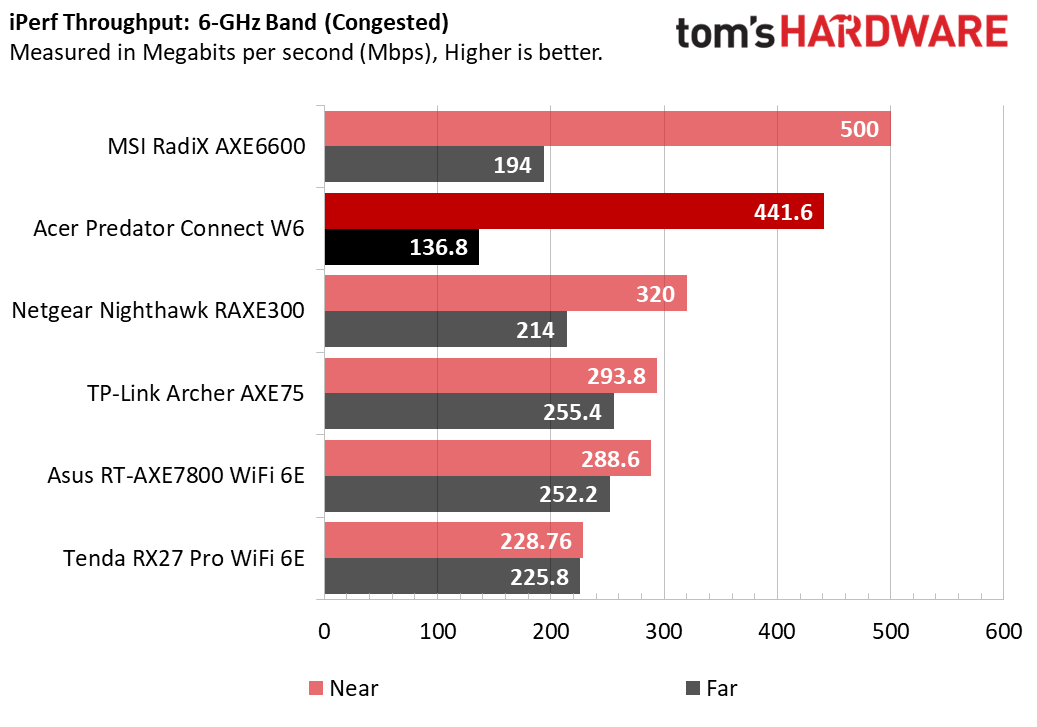
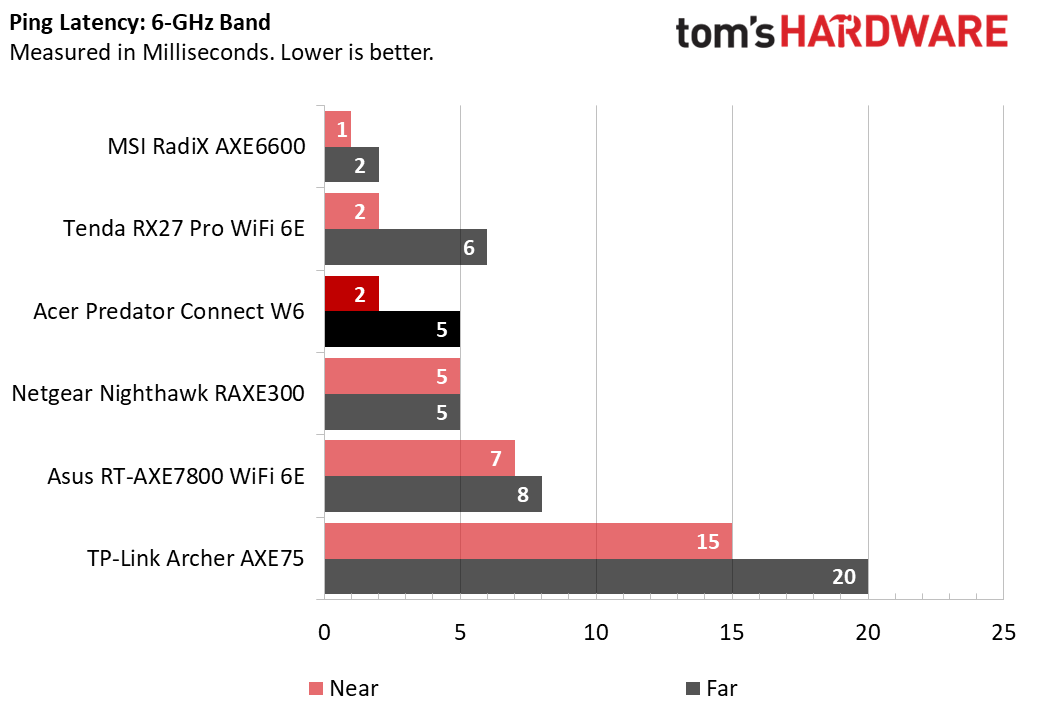
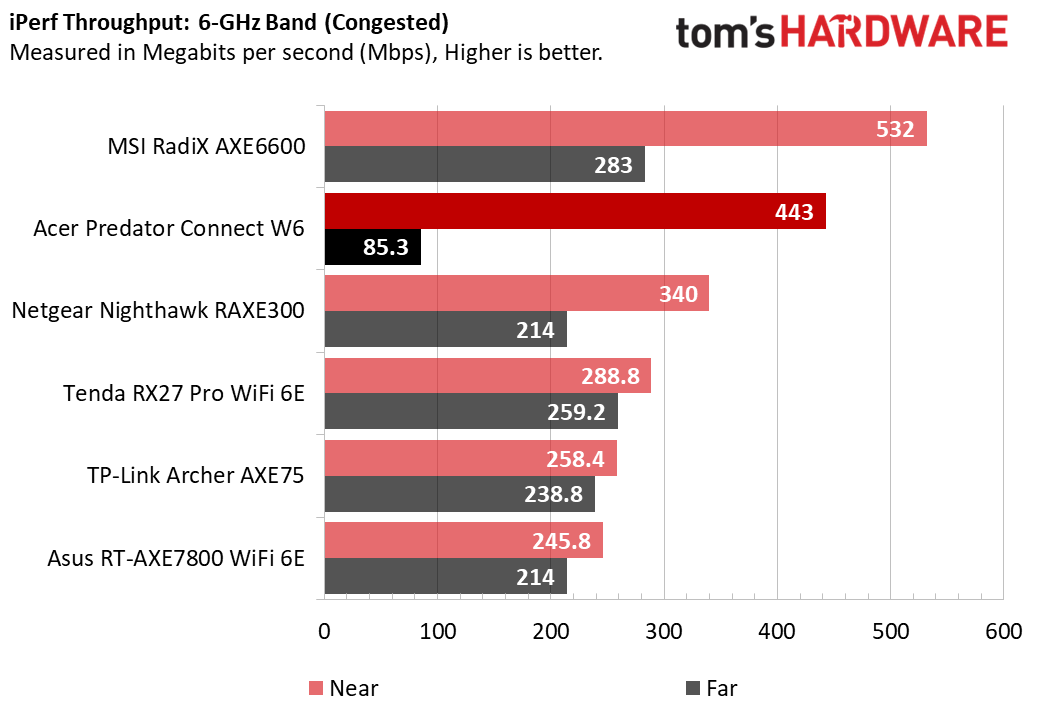



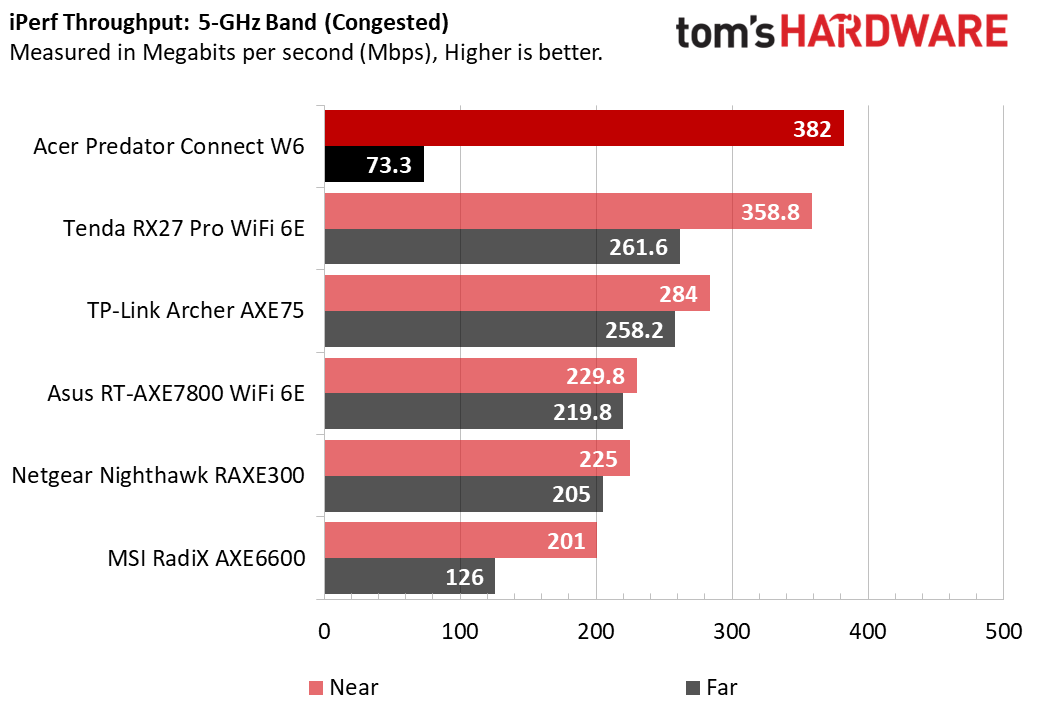
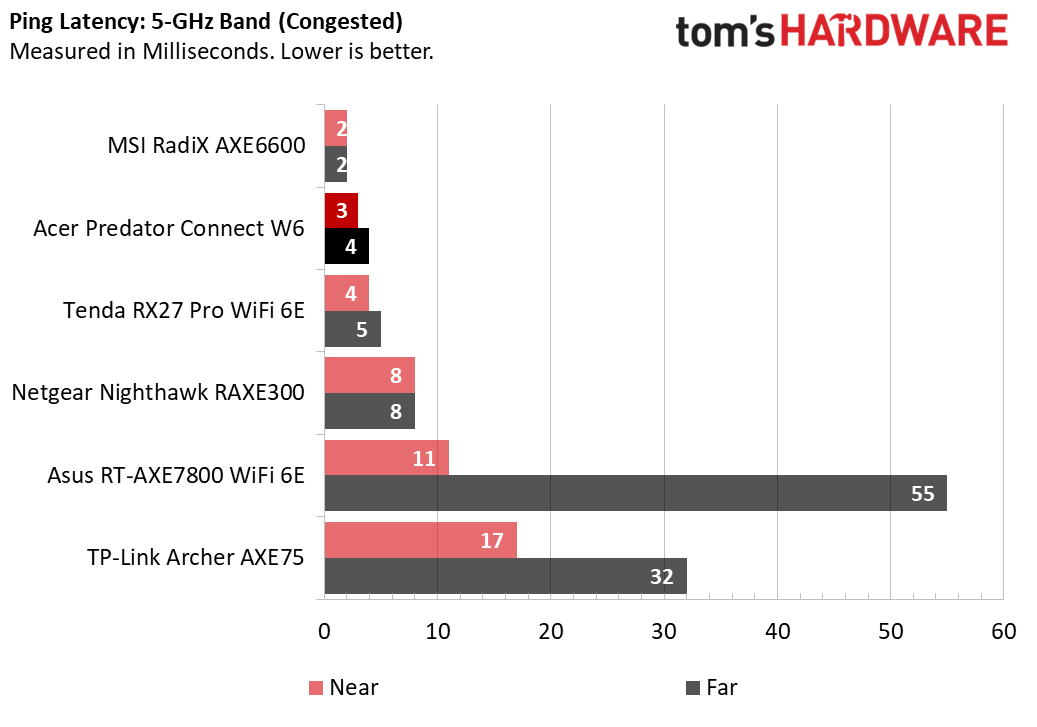
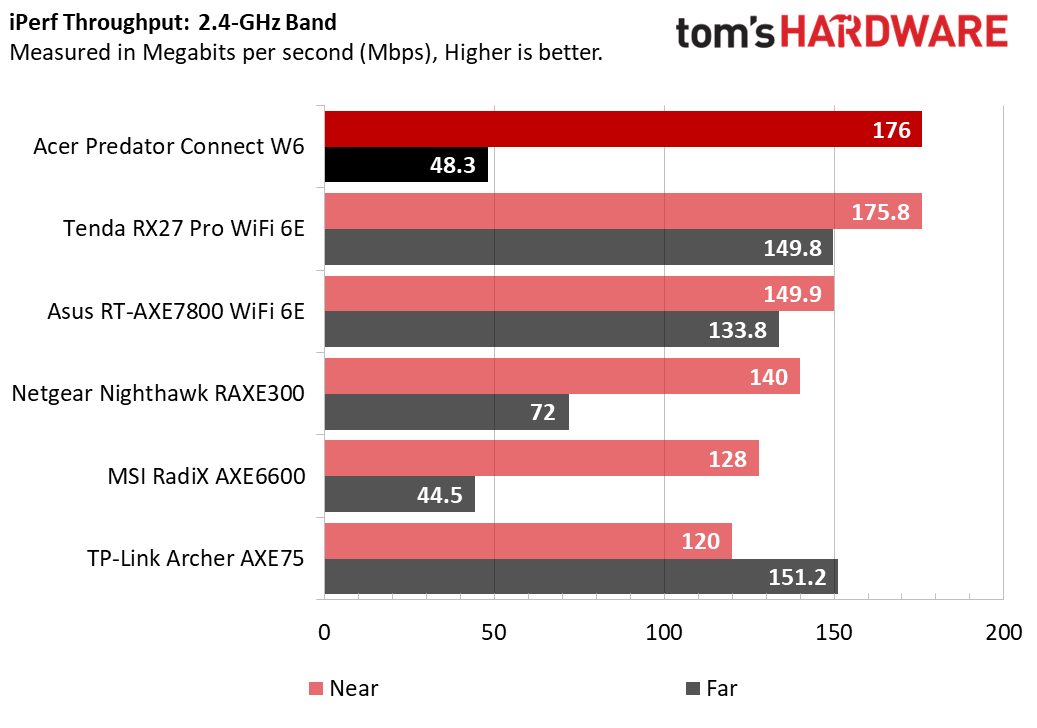
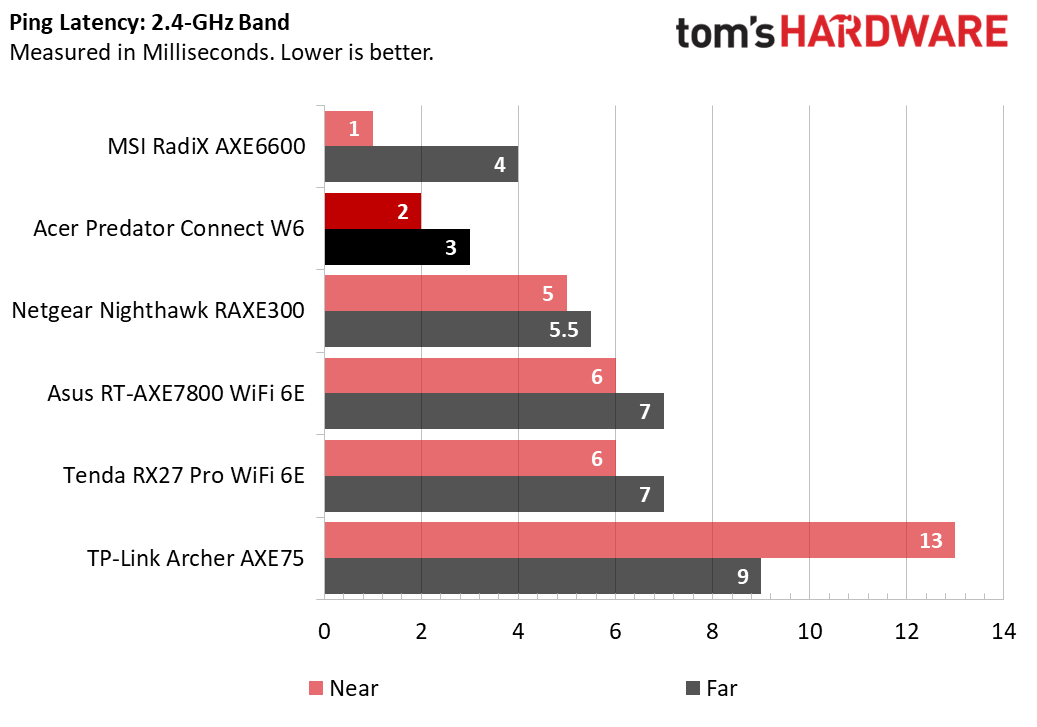
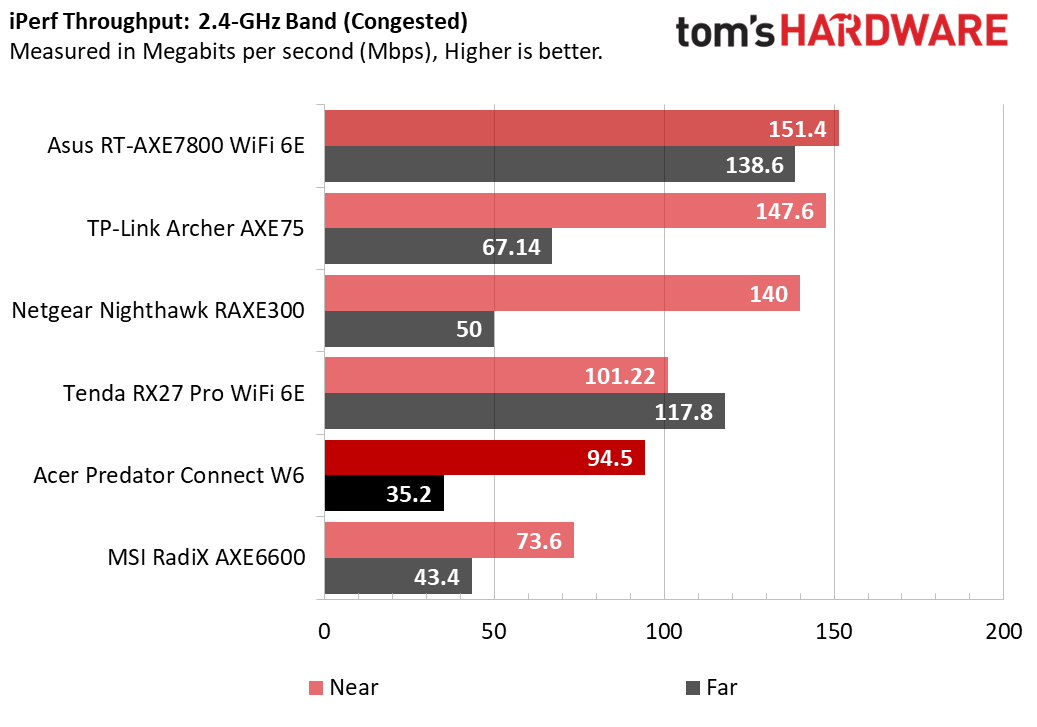
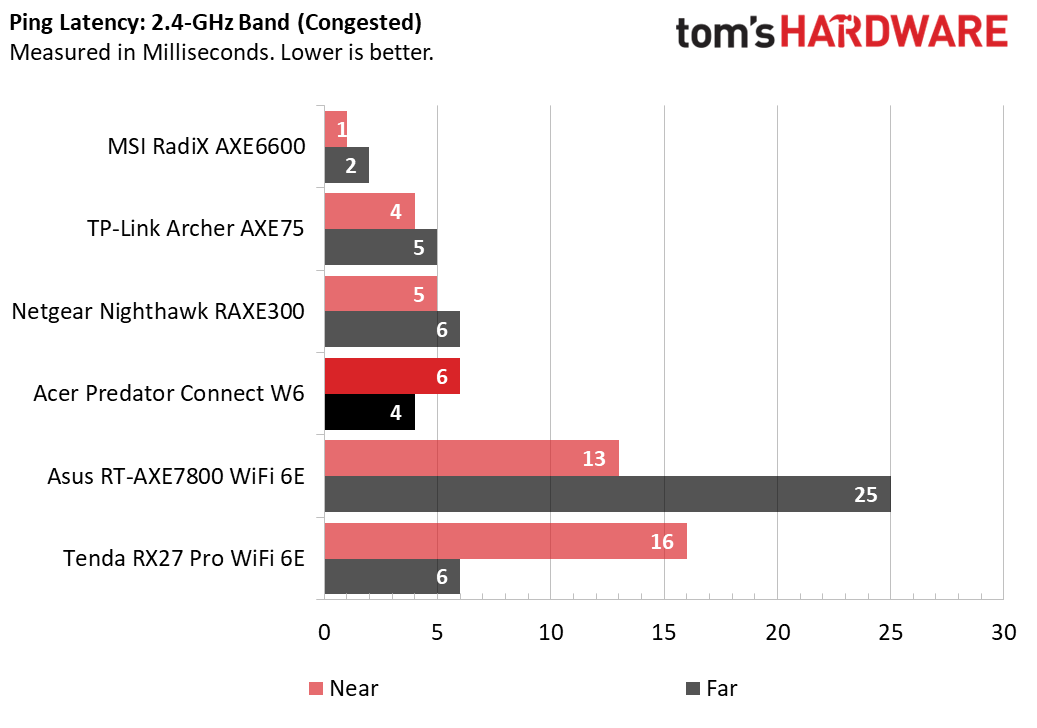
The Predator Connect W6 was off to a strong start in Near Uncongested tests. It posted a 6-GHz Near Uncongested speed of 441.6 Mbps, one of our strongest recent results. It also achieved 378 Mbps and 176 Mbps at 5 GHz and 2.4 GHz respectively—both solid results.
However, the router ran into trouble in some Far and Congested situations. The 6 GHz still performed well when Near and Congested, achieving 359 Mbps, but absolutely tanked as distance increased, with a minimum result of just 136.8 Mbps on the 6GHz band. That’s usable, but not as impressive as other routers we’ve recently tested.
The 5-GHz band is the go-to with this router. Though not as quick as the 6-GHz band when it’s at its best, it’s generally more reliable when congested and when far away from the router.
Taken as a whole, the Predator Connect W6’s performance was solid but mediocre. It did well when devices were placed nearby, and the network was otherwise unused, but longer distances and heavy congestion often left it a step or two behind other routers. The TP-Link Archer AXE75, for instance, hit peak speeds below the Predator Connect W6, but did better in the Far Uncongested and Far Congested workloads.
It’s not all bad news. Despite the bandwidth problems in some situations, the Acer Predator Connect W6 did well in latency testing and usually had no issues with packet loss or network reliability. Still, the Predator Connect W6’s overall performance had clear peaks and valleys. It might be a good choice for a studio apartment, but is harder to recommend for a multi-story home.
Bottom Line
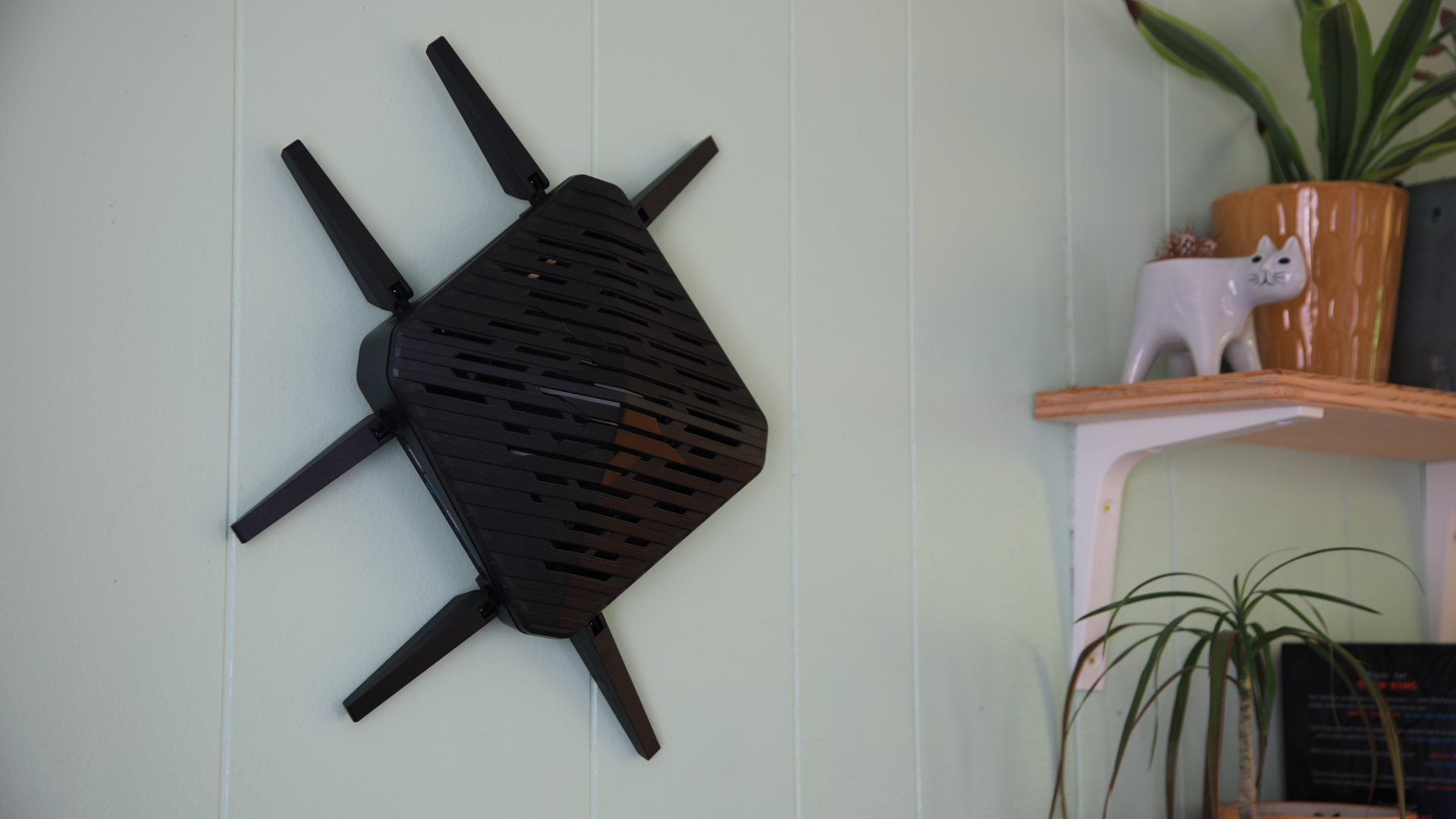
The Acer Predator Connect W6 is a simple, easy-to-use Wi-Fi 6E router. It doesn’t provide unusual features or remarkable capabilities for its retail price (which hovers around $250 online), but it doesn’t lack important features, either. It’s just a shame about the performance. The Predator Connect W6 did well at short ranges but stumbled as distances increased.
-
wakuwaku Reply
Erm....where are the pictures? Are we just supposed to trust your word that the interface is attractive? That is a subjective opinion though and while it is your right to say you like it or not and let it influence your rating, it is also the readers right to make their own judgement based on your given points.
Quick, easy setup that doesn’t require an app
Attractive web browser interface and smartphone app
This makes 2 points of the pros entirely worthless, meaning this should be reevaluated based on other criteria, or removed from your rating. -
cbxbiker61 I just got mine today. The stock firmware looks pretty. Not sure of the functionality though. I'm in the process of changing the firmware out for OpenWRT which has the features that I need, ipv6 over ipv4 and WireGuard.Reply
